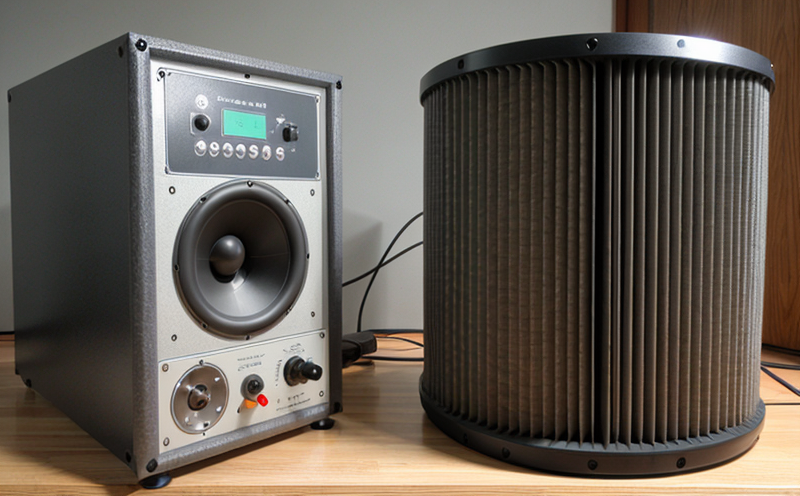ISO 11200 Noise Emission Testing of Shipboard Machinery
The ISO 11200 standard is a pivotal document in maritime engineering that sets forth comprehensive guidelines for the measurement and evaluation of noise emissions from shipboard machinery. This service ensures compliance with international standards, protecting crew and passengers by reducing exposure to hazardous noise levels, which are often exceeded due to the inherent loudness of ship machinery.
Our laboratory adheres strictly to ISO 11200 procedures for noise emission testing, employing advanced acoustic measurement equipment that can capture sound pressure levels in a wide range of frequencies. This allows us to provide accurate and reliable data that is crucial for meeting regulatory requirements and enhancing the safety and comfort on board ships.
The process involves several key steps: first, we prepare the machinery under test by ensuring it operates at typical operating conditions. Then, using specialized acoustic testing equipment placed in a controlled environment, we measure the noise levels emitted from different parts of the machinery. The data collected is compared against ISO 11200 criteria to assess whether the machinery complies with international standards.
Compliance with this standard not only ensures safety but also contributes significantly to the overall environmental impact by reducing unnecessary noise pollution in ports and waterways. By adhering strictly to these guidelines, we help shipbuilders and operators maintain high-quality standards that meet global expectations.
The importance of ISO 11200 cannot be overstated; it is an integral part of the broader effort to improve maritime safety and comfort for all onboard personnel. Our laboratory ensures that every test conducted adheres strictly to this standard, thereby contributing to a safer and more efficient shipping industry.
Industry Applications
| Application | Description |
|---|---|
| Machinery Design | Evaluating noise emissions during the design phase helps in optimizing machinery to ensure compliance with international standards. |
| Compliance Testing | Ensuring that shipboard machinery meets ISO 11200 requirements before delivery and installation on ships. |
| Operational Monitoring | Monitoring noise levels during the operational phase to ensure ongoing compliance with standards. |
| Retrofitting | Determining if existing machinery requires modifications or replacement due to excessive noise emissions. |
| Research and Development | Supporting R&D efforts by providing data for the development of quieter, more efficient shipboard machinery. |
| Regulatory Compliance | Ensuring that all shipboard machinery complies with international standards to avoid penalties and sanctions. |
| Purchasing Decisions | Aiding procurement teams in selecting suppliers who adhere to the highest noise emission standards. |
| Safety and Comfort | Improving crew and passenger comfort by reducing exposure to hazardous noise levels. |
Environmental and Sustainability Contributions
The ISO 11200 Noise Emission Testing of Shipboard Machinery plays a crucial role in the broader context of environmental sustainability. By ensuring that shipboard machinery meets stringent noise emission standards, we contribute to reducing noise pollution in ports and waterways, which can have significant ecological impacts.
Noise pollution from ships is not only a public health concern but also an issue of environmental degradation. Excessive noise can disrupt the natural habitats of marine life, affecting ecosystems that are crucial for biodiversity. By adhering to ISO 11200 guidelines, we help mitigate these negative effects, promoting a more sustainable maritime industry.
The data obtained from our testing ensures that ships are not only safe and efficient but also contribute positively to the environment. This is in line with broader sustainability goals set by international organizations like the International Maritime Organization (IMO), which aims to reduce the environmental footprint of shipping.
Our laboratory's commitment to ISO 11200 noise emission testing reflects our dedication to creating a more sustainable and safer maritime industry. By providing accurate, reliable data that supports compliance with international standards, we play a vital role in ensuring that ships operate efficiently while minimizing their impact on the environment.
Competitive Advantage and Market Impact
The ISO 11200 Noise Emission Testing of Shipboard Machinery is not just a compliance requirement; it provides significant competitive advantages. By adhering to these standards, shipbuilders and operators can differentiate themselves in the market by offering quieter, more efficient ships that comply with international noise emission regulations.
Compliance with ISO 11200 enhances brand reputation and customer satisfaction, as clients appreciate knowing that their investments are made with safety and environmental considerations in mind. This compliance also opens up new markets where stringent noise control standards are enforced, such as in Europe and North America.
The data generated from our testing can be used to optimize machinery design, leading to cost savings through reduced maintenance costs and improved performance. This not only benefits the shipyard but also the operators by ensuring longer-lasting equipment with lower operational costs.
In addition, meeting ISO 11200 standards can lead to favorable regulatory environments, reducing the risk of penalties and sanctions. This ensures a smoother business operation and enhances market reputation, contributing to long-term sustainability and growth.





